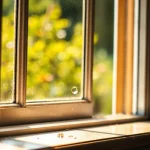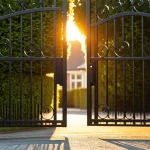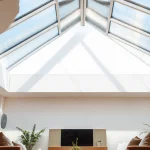Understanding the Importance of Sash Windows Preservation
Historical sash windows are treasured components of the UK’s architectural heritage, representing both aesthetic and cultural wealth. These windows not only enhance the visual appeal but also reflect the intricate craftsmanship of bygone eras. Preserving them contributes to maintaining the historical integrity of buildings, which is vital for cultural guardianship and education.
However, sash windows face environmental threats that endanger their longevity. Weather conditions, pollution, and moisture significantly contribute to rot and decay. Additionally, insect damage and neglect can further deteriorate these windows, posing risks to their structure and functionality. Implementing preventive measures is essential to safeguard these historical features.
Also read : Discover key components for sustainable insulation innovations in uk homes
By preserving original features, property owners can achieve significant benefits. Sash window preservation supports environmental protection by reducing the need for replacement materials and minimizing waste. Moreover, it can improve energy efficiency by sealing air leaks, which enhances insulation, reducing energy usage and costs. Furthermore, maintaining these windows can increase property value as they are often sought after in the real estate market for their authentic charm and historical significance.
Common Issues with Sash Windows
Sash windows, while elegant, often present several challenges over time. One prevalent concern is rot prevention. Identifying early signs of decay, such as soft wood or discolouration, is crucial. Unchecked, rot can compromise the structural integrity of historic sash windows. Regular maintenance routines can prevent extensive damage, ensuring that these features remain a charming part of any building’s facade.
Topic to read : Cozy up your uk living room: an in-depth guide to creating a warm winter retreat
Another significant issue pertains to energy efficiency. Sash windows can suffer from drafts and air leaks, leading to inefficient heating and cooling within properties. These gaps, typically found around window perimeters, are culprits in increased energy bills. Addressing these leaks not only preserves the aesthetic but also aligns with environmental protection goals by reducing the building’s carbon footprint.
Additionally, moisture damage and pest infiltration threaten the longevity of sash windows. Signs of moisture issues include peeling paint and fogging glass, while pests may lead to visible wear or structural weaknesses. Addressing these issues promptly with effective sealing and treatment is essential for long-lasting preservation.
Proven Preservation Techniques
Understanding how to preserve historical sash windows not only maintains their charm but also protects their structural integrity. Here’s a closer look at effective preservation techniques.
Materials for Preservation
Choosing the right materials is critical for maintaining the longevity and appearance of sash windows. Use durable, yet historically accurate woods such as oak or mahogany, which are known for their resistance to rot. Treat these woods with high-quality preservatives that prevent moisture and pest damage. When it comes to finishes, opt for breathable paints and varnishes that allow the wood to ‘breathe,’ preventing moisture traps which can lead to decay.
Tools Required for Restoration
Proper tools make all the difference in sash window restoration. Essential items include chisels, sanding blocks, and sash saws, alongside protective gear like safety goggles. Always prioritise safety by wearing appropriate attire and using stable ladders when working at height. Sourcing high-quality tools can be done through specialised restoration suppliers, ensuring long-lasting results.
Step-by-Step Restoration Process
To address rot and decay, begin by removing the damaged wood and treating the area with a fungicidal wash. Replace it with new wood fitted precisely to maintain historical accuracy. Seal drafts with weatherstripping methods that enhance energy efficiency without compromising the window’s appearance. When replacing glass panes, carefully remove the existing glass, using techniques that ensure new panes are installed securely while preserving the original design.
Case Studies and Expert Testimonials
Exploring preservation case studies offers rich insights into the practicalities of maintaining historic sash windows. Several heritage property restorers have shared success stories where careful restoration has not only preserved the authenticity of the building but also enhanced its functionality, demonstrating resilience to modern environmental pressures.
For instance, in one notable project, expert restorers managed to integrate modern weatherproofing techniques while preserving the visual integrity of these windows. By utilizing advanced tools and innovative restoration methods, they achieved a delicate balance that met both aesthetic and contemporary energy standards.
Expert advice, drawing from years in the field, often emphasizes a methodical approach to restoration. Professionals recommend investing time in thorough inspections before commencing any work. Identifying the extent of decay or damage early allows for tailored solutions that align with both historic preservation goals and current safety standards.
Lessons learned from challenging restoration projects often reiterate the importance of understanding the unique qualities of each window—considering factors such as the age of material and local climate conditions. With careful assessment and expert guidance, achieving sustainable preservation of historic sash windows becomes more attainable.
Legal Considerations for Heritage Properties
Heritage property laws play a crucial role in the preservation of historic buildings in the UK. Owners of such properties must navigate a complex web of legal requirements to ensure any alterations, including those to sash windows, comply with national and local regulations. This ensures that historical integrity is maintained while allowing for necessary updates and repairs.
In particular, comprehensive preservation regulations dictate the permissions required for any modifications to sash windows in listed buildings or conservation areas. Typically, consent is necessary from local planning authorities before making any structural changes. These permissions serve to protect the cultural significance of historically rich properties, balancing preservation with modern needs.
Consulting resources such as the government’s planning portals or engaging with architectural conservation specialists can aid in understanding and complying with these legal frameworks. Professional advice ensures that restoration efforts align with accepted standards, thus preventing legal disputes and maintaining the building’s historical value.
Visual Resources and Additional Learning
To truly excel in sash window preservation, harnessing a range of visual resources and instructional materials can be invaluable. These resources provide practical insights and guidance that can significantly enhance your understanding of both the challenges and solutions involved.
Images of Best Practices
A compelling way to grasp effective preservation techniques is through well-curated before-and-after restoration photos. These images vividly showcase the transformative potential of careful, skilled intervention, offering inspiration and practical lessons. Complementing these photos, diagrams illustrating proper techniques are essential. They provide step-by-step visual guidance on tasks such as sealing drafts and repairing rot, making complex processes more approachable. Additionally, infographics that outline common issues like moisture damage and energy inefficiencies—and their respective solutions—can serve as handy reference tools.
Recommended Reading and Resources
For those looking to deepen their knowledge, there is a wealth of books and articles on sash window preservation. These texts delve into historical practices and contemporary innovations, offering a well-rounded perspective on maintaining historic sash windows. Engaging with online forums and communities is another excellent avenue for sourcing help and advice from fellow enthusiasts and experts. These platforms often include discussions on specific challenges and successful strategies, providing real-world context to theoretical knowledge.
For the hands-on restorer, workshops and training sessions offer invaluable, practical experience. These learning opportunities are perfect for honing skills in a controlled environment, with access to expert guidance and feedback. By tapping into these resources, both novices and seasoned restorers can enhance their capability to preserve the charm and functionality of historic sash windows effectively.










